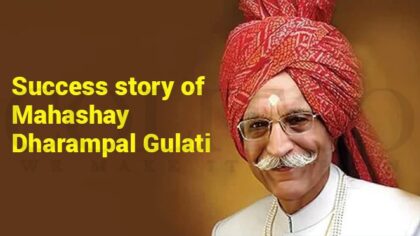Published On: July 16th, 2020
The ‘Make In India’ project imparts a hassle-free business, helping budding entrepreneurs and students fill patents. The program was commenced on September 25th, 2014 by Prime Minister Narendra Modi that offers incentives for startups. India is the 3rd largest business ecosystem in the world. So, having initiatives like Make In India is a head-start for corporate sectors and industries.
But the question arises in our minds is, ” Is Make In India Worthy Students and Young Professionals?”.
The idea is to ease the process of compliance for startup founders. It will hence make them concentrate on their actual business operations. But, in the stance of performing an ‘easy business,’ Make In India has failed in three growth factors that are – output, employment, and investment.
“Make in India! By this, we mean we want to give low cost manufacturing, ease of business, skilled manpower. India is a land of huge possibilities & scope” – quoted by PM
A SHORT EXAMINATION OF EACH PARAMETER FOLLOWS BELOW
CONTRACTION OF INDIAN SECTORS: THE OUTPUT GROWTH
Accounting to the monthly index of industrial production, the growth registered is double-digit. This is specific to the manufacturing sector. Moreover, only two phases recorded notable growth from April 2012 to November 2019. But a few stages even had a negative value growth range. Thus, it is clear that downwards growth refers to the contraction of that sector due to Make In India.
LATE AND VAGUE RESPONSES: THE EMPLOYMENT GROWTH
The Indian Government failed to update the employment data from using this project. Hence leaving people unclear on the available job opportunities. Also, the recent mechanisms for collecting the data of employment growth is delayed by the government itself. With new market entries, the final growth value is eventually lagging in expectations. Hence, employment opportunities are yet to arise from this initiative.
DECLINED HOUSEHOLD SAVINGS: THE INVESTMENT GROWTH
On one side, India surpassed the U.S and China in foreign direct investment in 2015. But on the other hand, savings from households went low, compared to private sectors. Thus, the investment growth is low owing to the poor climate for household savings.
Here are some obstacles in THE Make in India program:
- More improvement in the Ease-of-Doing Business initiative
- Simple tax Environment
- Improvements in the rules regarding Land Acquisition
- Reforms in the Labor Laws
- Improvement in Infrastructure and Logistics
- More Efficient and Transparent Administration and Regulation System
- Promotion of SMEs
- Promotion of Innovation
- Gaining Global Competitiveness and Global Leadership
When debating on the crux of these issues, it is visible that the goals set for Make In India are highly ambitious. To name a few:
- India’s overall growth rate to be 12-14%. This is an overestimation of the present rate.
- Inclusion of 25 distinct and growing sectors on-the-go, leading to a loss of focus.
- Commencement of the initiative is ill-timed, without knowing the growing uncertainties and trade protectionism.
Assuming its goals and vision, Make In India is not a complete failure. The numbers can change, and even policies can be restructured, based on the reality of the Indian startup scenario.
“India can grow as a manufacturing nation only if we are able to dismantle the myriad of approval systems. It requires a mindset change. And this is a huge challenge”, says Mr Amitabh Kant, Kant, the Secretary of DIPP
MAKE IN INDIA: EVALUATION OF CHALLENGES AND PREDICTING OUTCOMES
On a positive note, there are solutions to resolve the pain-points of Make In India. But those solutions work only if the perception of budding entrepreneurs and students improve. Let’s tackle a few challenges below with a possible solution for the same.
Pointing to the lag of employment growth, Make In India can integrate the ‘Assemble In India’ program in its policies. This way, India can achieve 4-crore job opportunities before 2025. Even reaching 8-crores within 2030 is possible.
There is an inbuilt inconsistency in the framework of foreign capital. Planning for a better supply production of domestic goods will change the perspective. Experts recommend trading capital with rich countries out of India.
‘Policy Casualness’ is a common phrase many on-field professionals use today. It refers to the idea of ‘doing an easy business.’ Hence, to avoid casualness, the initiative must install strategies accurately. Adding to it, the project should oversee other stalled programs of India.
The sectors under the initiative include around 25 diverse & booming domains. In this context, setting goals like a high growth rate is a quantum jump. Hence, the base policy needs reformulation. One way to do this is to focus on specific (profitable) niches, rather than combining many Indian sectors simultaneously. This way, ‘loss of focus’ by Make In India gets resolved.
But above all challenges, the success of the initiative is possible from your startup’s support. Let’s see how a few Indian brands supported the PM’s initiative.
TWO NOTABLE CONTRIBUTIONS FROM THE BUSINESS SPACE FOR MAKE IN INDIA

Many foreign brands showed interest to partner with Indian companies, favoring the Make In India project. When looking back at the High-Tech Indian market, we have two notable contributions.
Example #1 – Mercedes Benz
The contribution of Mercedes Benz is remarkable for its two ideals. One, their new car model, “C220 2DI” with other luxury versions, got approved to manufacture vehicle components from Indian platforms. This way, the localization of India extends. Two, the company signed an agreement, stating that Indian luxury buses will be released and exported to other Southeast Asian markets.
Example #2 – Reliance Defence Ltd
Owned by Anil Ambani, the Reliance Defence Ltd agreed to maintain and manufacture deals worthy of $6 billion with Almaz-Antey of Russia on December-18th, 2015. He mentioned during an interview that this relationship will be a rare milestone for both countries.
Following which, Reliance Defence got the license approval from the Department of Industrial Policy and Promotion (DIPP), to produce all-terrain combat vehicles, sensors, night-vision devices, helicopters, uncrewed aerial vehicles, and more!
“The manufacturing of both military and civil helicopters to meet the needs of the country are a significant part of this commitment”, stated a spokesperson from Reliance Defence Ltd
THE FINAL ANALYSIS

“The most essential factor is trust. Let’s start with trust and the government will intervene only if it sees any deficiencies”, says the PM
FOOTNOTES:-
- Why ‘Make in India’ has failed
- India Soon To Be The Largest Startup Ecosystem In The World?
- For 8% GDP growth, manufacturing needs to grow 12-14%: NITI Aayog member
- Make in India Sectors
- Make in India: Challenges & Prospects
- Reliance Defence partners Russia’s Almaz-Antey
[/vc_column_text][/vc_column][vc_column width=”1/6″][/vc_column][/vc_row]















